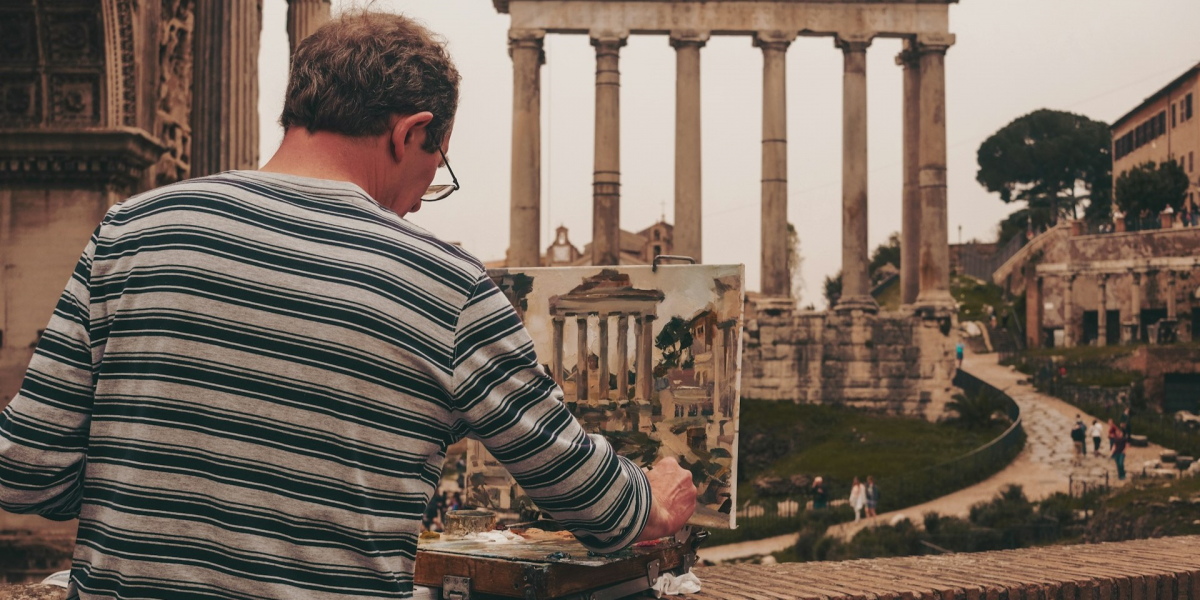Europe has been at the heart of art’s evolution, constantly redefining creativity and inspiring movements that shape how we see the world. From ancient civilizations to modern artistic expressions, Europe’s art history is a reflection of changing societies, beliefs, and cultural shifts. This article explores how European art has developed over centuries, offering an enduring legacy that continues to influence the global art scene.
How Has Europe’s Cultural Diversity Shaped Its Art?
Europe’s rich cultural diversity has been a significant driver of its artistic evolution, giving rise to a wide array of styles, techniques, and traditions. Each region and era has left its distinct mark, from the detailed mosaics of Byzantine art to the grand sculptures of ancient Greece. This unique blend of influences has contributed to Europe’s vibrant art history, where various forms of expression came together, creating a lasting impact that resonates globally.
Art in Europe has been shaped by different cultural narratives, including the ancient empires of Greece and Rome, and the artistic revival during the Renaissance. Each period built upon the legacy of the past, incorporating local customs and emerging philosophies. These regional distinctions and varied inspirations are what make European art incredibly diverse. Travelers and art lovers can find traces of history woven into Europe’s architecture, paintings, and sculptures, offering insights into the continent’s profound cultural heritage.
The Renaissance to Baroque: How Did European Art Change?
The Renaissance, which began in Italy in the 14th century, marked a monumental shift in art with its emphasis on humanism and classical ideals. Artists like Leonardo da Vinci and Michelangelo pioneered new techniques that portrayed human figures with realism and emotion. This period also saw the rise of scientific inquiry, which influenced art, leading to a heightened interest in the natural world. Renaissance artists focused on balance, symmetry, and the exploration of perspective, elements that transformed European art and continue to be studied today.
Following the Renaissance, the Baroque period took center stage, emphasizing drama, grandeur, and intense emotions. Baroque artists such as Caravaggio and Rembrandt created works filled with movement and vivid contrasts, capturing the viewer’s attention with their theatrical compositions. Religious themes were also prevalent, with artists using light and shadow to heighten emotional impact. The Baroque period demonstrated the power of art to evoke strong feelings, paving the way for future styles that would continue to explore depth and complexity in visual storytelling.
How Did Modern Art Movements Challenge Traditional Techniques?
The 19th and early 20th centuries brought about a revolutionary period in European art, as artists sought to move beyond traditional techniques and explore new forms of expression. Romanticism emerged as a reaction against the rationalism of the Enlightenment, focusing on emotion, individualism, and the awe of nature. Romantic artists like J.M.W. Turner and Caspar David Friedrich used their works to convey powerful feelings, emphasizing the beauty and mystery of natural landscapes.
Impressionism, which developed in the late 19th century, broke further from convention by focusing on light, color, and capturing moments in time. Artists like Claude Monet and Pierre-Auguste Renoir painted scenes outdoors, using loose brushstrokes to convey the fleeting effects of sunlight and atmosphere. This movement encouraged viewers to experience the world through a new lens, valuing perception over precise detail. Impressionism’s influence sparked other modern movements, including Cubism and Surrealism, each challenging the boundaries of representation and realism.
Photography also played a role in shaping Impressionist techniques, as the invention allowed artists to capture real-time images. Painters adopted elements of photography, such as cropping and unconventional perspectives, to bring spontaneity and realism into their work. By focusing on everyday life and the impermanence of a single moment, Impressionism and the modern art movements that followed redefined the way people perceived art, setting the stage for contemporary explorations in visual media.
What Is the Lasting Impact of European Art on Modern Culture?
European art has left an indelible mark on global culture, influencing modern art, architecture, and design. The progression from classical antiquity to modernism showcases a continuous journey of innovation, where each era builds upon the last. The legacy of ancient Greece and Rome’s emphasis on form and symmetry can still be seen in modern architecture, while the Renaissance’s focus on perspective continues to inform visual arts education. Romanticism’s fascination with emotion and the sublime resonates in contemporary media, from film to literature, where the exploration of human nature remains a central theme.
Today, European art is celebrated in galleries, museums, and educational institutions worldwide, inspiring new generations of artists. Art movements that originated in Europe have shaped how we interpret aesthetics, appreciate cultural narratives, and understand human creativity. The continent’s artistic heritage not only reflects its historical journey but also offers a powerful reminder of art’s role in conveying the complexities of human experience. As the world continues to evolve, European art remains a timeless source of inspiration, encouraging creativity, dialogue, and an appreciation for the beauty and diversity of human expression.















